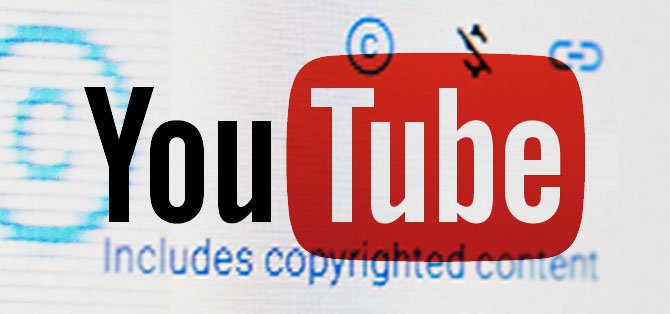Recently we’ve been receiving a number of emails from users, complaining that video clips downloaded from Videvo.net are causing their YouTube videos that contain Videvo.net clips to be flagged as containing copyrighted content. This can be a little unsettling if you’re not used to receiving these alerts from YouTube, but aside from this, it can also be hugely frustrating because it means you can not monetise your video with YouTube – which is a bit of a problem for some users.
But don’t panic! There is a rational explanation for this, and a straightforward workaround.
The problem is caused YouTube’s automated copyright protection system, known as Content ID. Content ID is designed to protect creators’ original content from being used in other videos without permission – an important and sophisticated system, but also flawed in many cases. One such case is the use of stock media, for example, stock footage from Videvo.net. Every day, thousands of clips are downloaded from Videvo by users all over the world looking to include short stock clips in their projects. Some videos have been downloaded many times, edited into a project and uploaded to YouTube.
For large content creators who qualify for Content ID, YouTube will automatically flag-up new videos on the platform that include media from the large content creator’s videos, and issue a copyright notice to these videos.
And here lies the problem. If the large content creator has used a clip from a stock agency such as Videvo, anyone else who uses that clip for a YouTube video is likely to receive a copyright notification.
But what does this mean for the person receiving the copyright notification? Well, not a lot. Their YouTube account is perfectly safe, and they can usually still publish their video (unless the claimant has issued a takedown notice, which is fairly rare in these instances), it just means they can not monetise it through YouTube’s ad-serving platform known as Adsense (or other 3rd-party ad networks).
So how can you remove such a claim from your video? Well there is a easy solution.
You can dispute the claim in your YouTube dashboard by going to video manager, and clicking the “includes copyrighted content” link next to the video in question. This will take you to a page with more details about the claimant, and what action the claimant has taken – usually the claimant chooses to monetise your video. In the bottom right of this page, there is a link to “File a dispute” – follow this link to dispute the claim, then select the option: “I have a license or permission from the proper rights holder to use this material.”
You will then be guided through more steps to confirm your claim – in the text area provided, you should explain that the video clip has been downloaded from Videvo.net, linking the original video, and that you have a license to use the clip in question. You will then be asked to review and submit your claim.
And that’s it, you’ve now submitted your dispute. What happens next is the claimant has a period of 30 days to either accept your dispute or reject it. In most cases they will either not respond, or they will accept your dispute – after all, their claim was automatically generated by YouTube’s Content ID system. If they don’t respond within 30 days, your dispute is automatically approved.
In the rare instance that they reject your claim, you can file another dispute, but you then run the risk of a copyright strike against your YouTube account, which can result in your account being terminated. The best course of action is to find a suitable contact for the claimant outside of the YouTube platform and speak with them directly. In most instances, any rejection of a copyright dispute by the claimant is a result of a misunderstanding, usually on the part of whoever is managing their YouTube channel. In fact, this exact situation happened to stock video producer, Mitch Martinez with his own content- you can read more about his story here: https://petapixel.com/2015/10/25/sony-filed-a-copyright-claim-against-the-stock-video-i-licensed-to-them/
For more information on Content ID, here is a useful support article by Google.
https://support.google.com/youtube/answer/2797370
In summary, if you receive one of these claims the best course of action is to remain relaxed, and follow the steps outlined above, which in most cases will result in the claim being removed. If you do find yourself in an ongoing dispute with a claimant, then do feel free to contact us and we will do our best to advise, and help you through the process.




